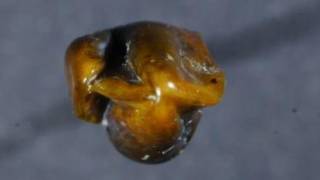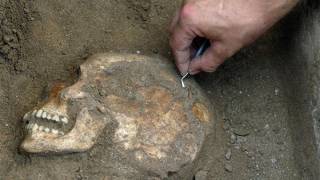Major New Discovery that Rewrites History of Stonehenge
Archaeologists working near the Stonehenge World Heritage Site have discovered important new sites that rewrite the Stonehenge landscape. Some sites predate the construction of Stonehenge itself. The remains, found at Larkhill and Bulford, were unearthed during excavations ahead of the construction of new Army Service Family Accommodation.
The dig at Larkhill has found remains of a Neolithic causewayed enclosure – a major ceremonial gathering place some 200 m in diameter, and dating from around 3650 BC has been found. About 70 enclosures of this type are known across England, although this is only the second discovery in the Stonehenge landscape, with the other further to the north at Robin Hood’s Ball on the Salisbury Plain Training Area. In Wessex they occur on hilltops and along with long barrows are some of the earliest built structures in the British landscape. They were used for temporary settlement, as ceremonial gathering places, to manage and exchange animals, including the first domesticated cattle and sheep and for ritual activity, and disposal of the dead including by exposure.
The Larkhill enclosure has produced freshly broken pottery, dumps of worked flint and even a large stone saddle quern used to turn grain into flour. The Neolithic period saw the first use of domesticated crops and this find provides evidence of this. Early farming would have caused significant localised change across the landscape as small fields were created for the first time. Human skull fragments were also found in the ditch, probably reflecting ceremonial practices and religious belief.
The Larkhill causewayed enclosure is around 700 years older than Stonehenge, and is part of a landscape that included long barrows and cursus monuments. Long barrows may have served as markers within the landscape, often commanding key positions that overlooked areas of downland and only occasionally containing burials. Cursus monuments are possible processional ways, one of which known as the `Lesser Cursus` appears to align on the new enclosure at Larkhill. The Greater Cursus, an earthwork nearly 3 km in length, is the longest structure. It connects and divides parts of the landscape, and separates the Larkhill causewayed enclosure from the place that became Stonehenge. The eastern end of the cursus terminates just short of the large Amesbury 42 long barrow.
The people who built the causewayed enclosure are the ancestors of the builders of Stonehenge and were shaping the landscape into which the stone circle was placed. Their work shows that this was a special landscape even before Stonehenge was constructed. People were already living and working within what we now call the Stonehenge landscape and they were building the structures that would culminate in the Stonehenge complex of stones and earthworks. The Larkhill site shows that they had the social organisation necessary to come together to build significant earthworks and the resources to support the work, as well as the people to carry it out. The offerings in the ditches also show the rich religious life they had created.
Dr Alistair Barclay of Wessex Archaeology said “this is an exciting new find and one that transforms our understanding of this important monumental landscape.”

While part of the site has been investigated the majority of the monument remains undisturbed within the Larkhill Garrison.
At nearby Bulford archaeologists have found further evidence of prehistoric activity. Although henges are well-known across the landscape, Bulford has a double henge, the only one known in Britain. Each henge is formed by an open space enclosed by a ditch. The earliest phases were created around 2900 BC with the enclosures formed by ditches dug in segments with openings to the north. This form was altered when both were enclosed within further ditches in the Early Bronze Age (2000 BC), perhaps showing that their function changed or because they had been closed down.
From one of the Bulford henges a skull from a large dog or wolf, maybe a working companion, a trophy from the hunt, or even a totemic symbol, was recovered.
Martin Brown, Principal Archaeologist for WYG said “These discoveries are changing the way we think about prehistoric Wiltshire and about the Stonehenge landscape in particular. The Neolithic people whose monuments we are exploring shaped the world we inhabit: They were the first farmers and the first people who settled down in this landscape, setting us on the path to the modern world. It is an enormous privilege to hold their tools and investigate their lives.”
Archaeological work on both sites is being managed and directed by WYG on behalf of Defence Infrastructure Organisation (DIO), with fieldwork undertaken by Wessex Archaeology.
The sites’ development is part of wider plans to accommodate the 4000 additional Service personnel plus their families who will be based on and around Salisbury Plain by 2019 under the Army Basing Programme. In total, the MOD is planning to invest more than £1 billion in the area which will provide more than 900 new homes for Service families, over 2,600 new bed spaces for single soldiers and the construction, conversion or refurbishment of 250 other buildings within bases, such as offices, garages, workshops and Mess facilities.






















